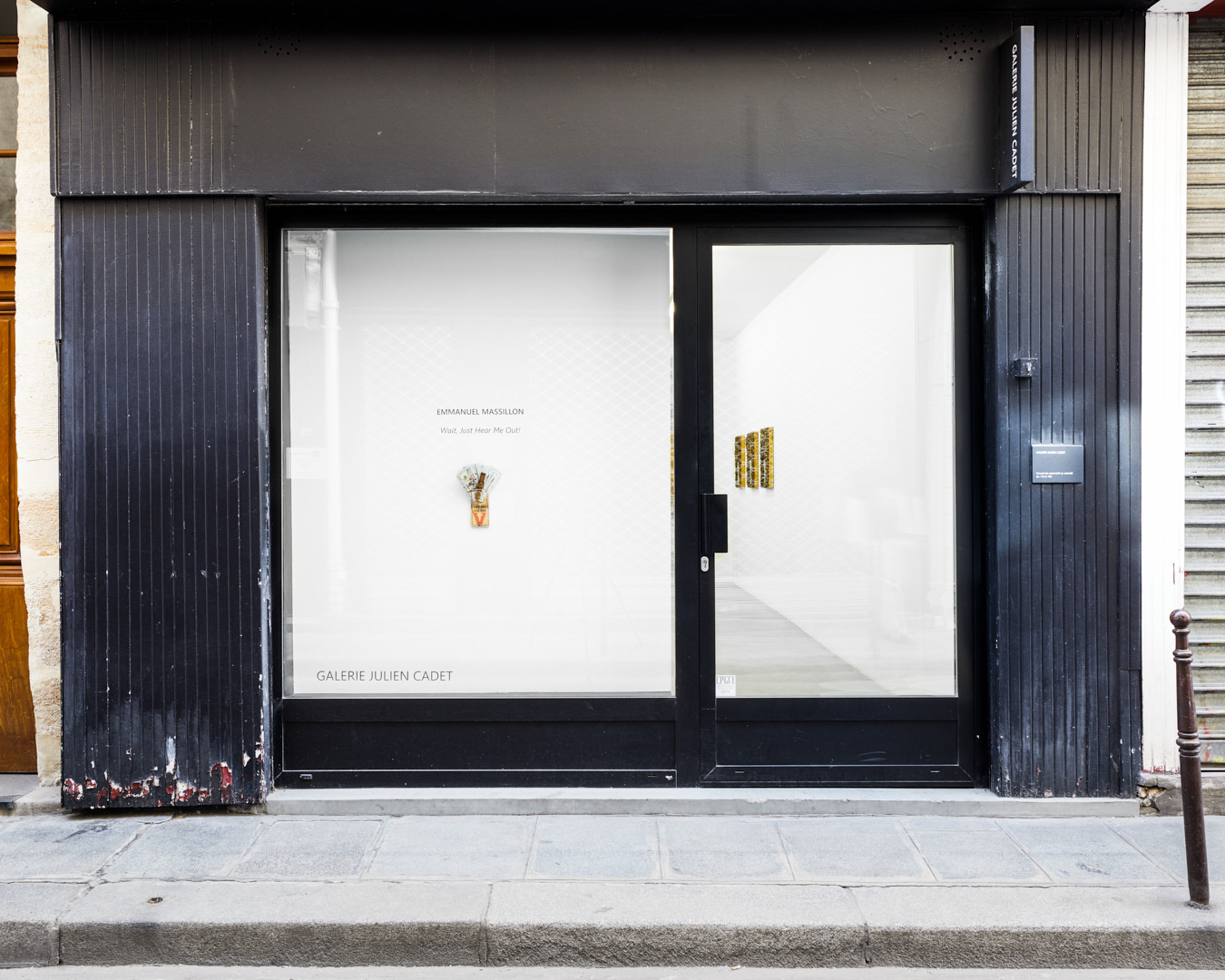
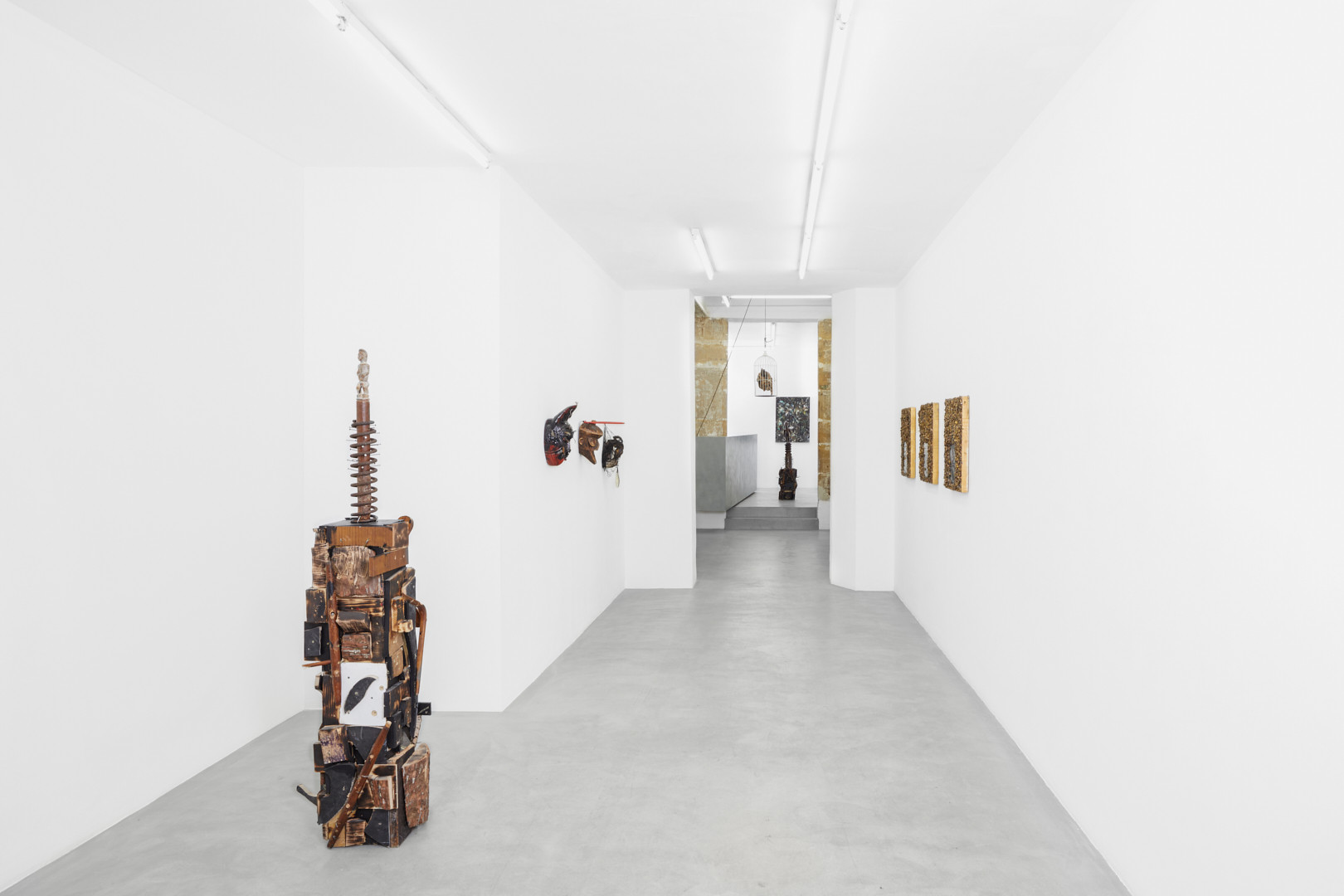

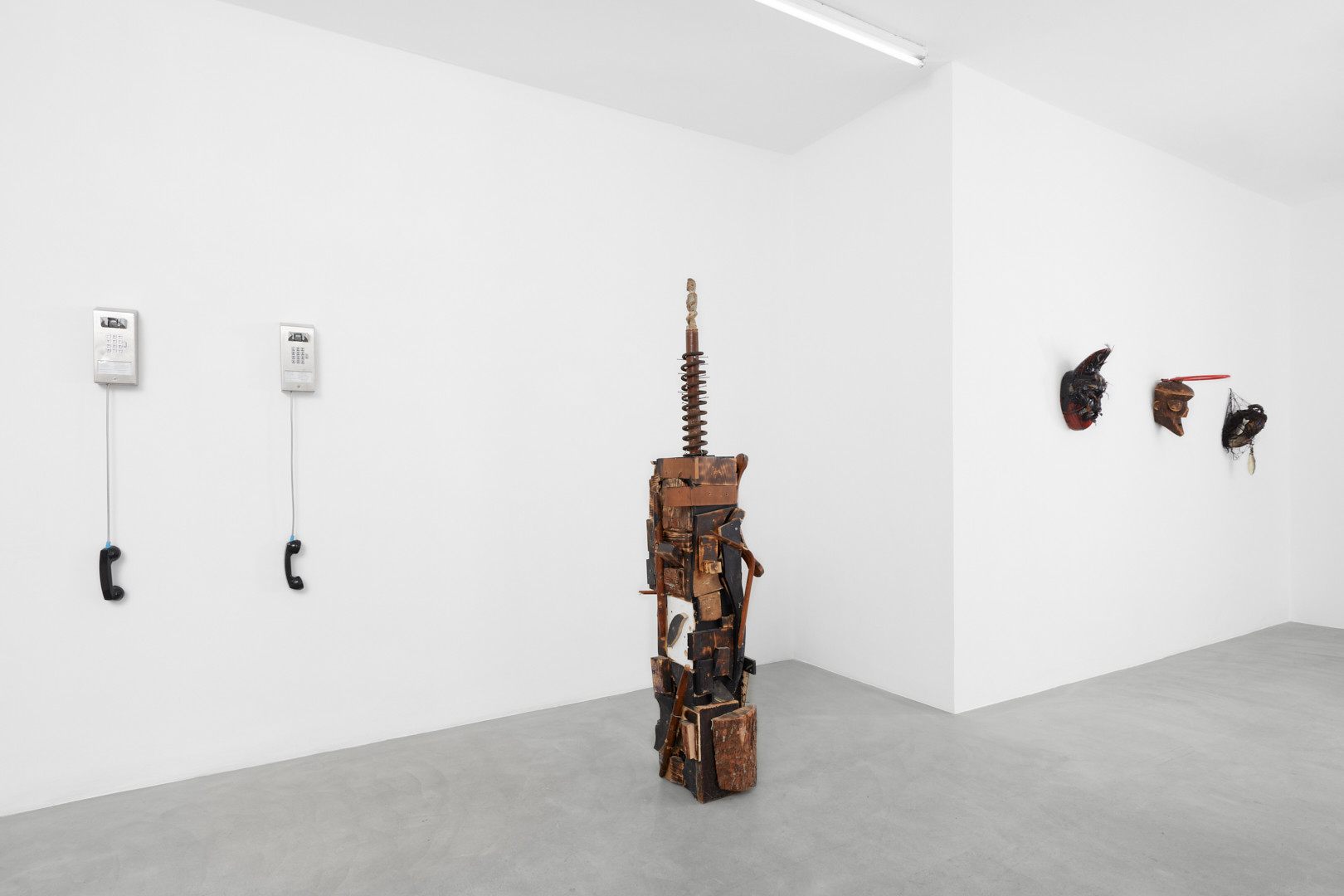
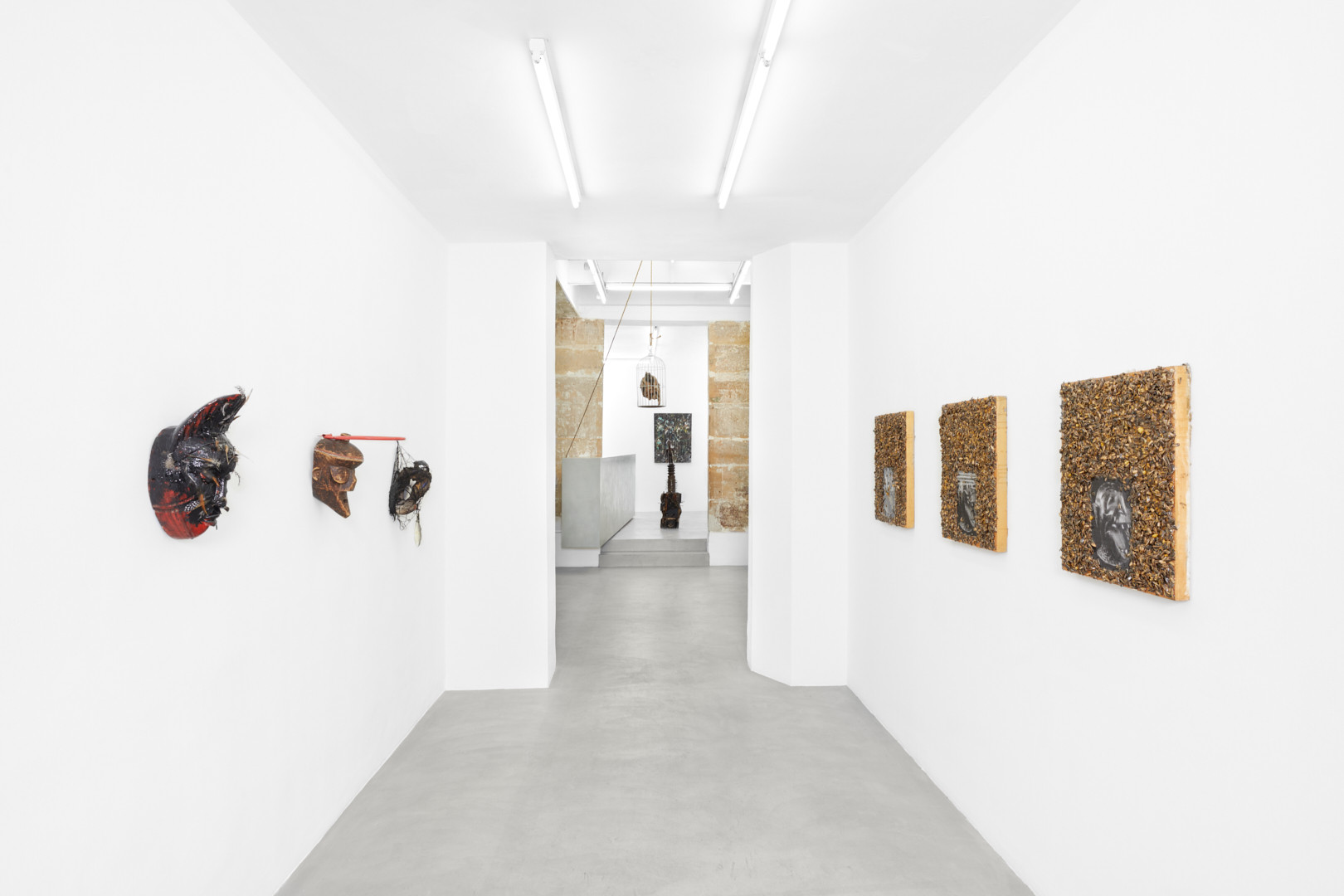
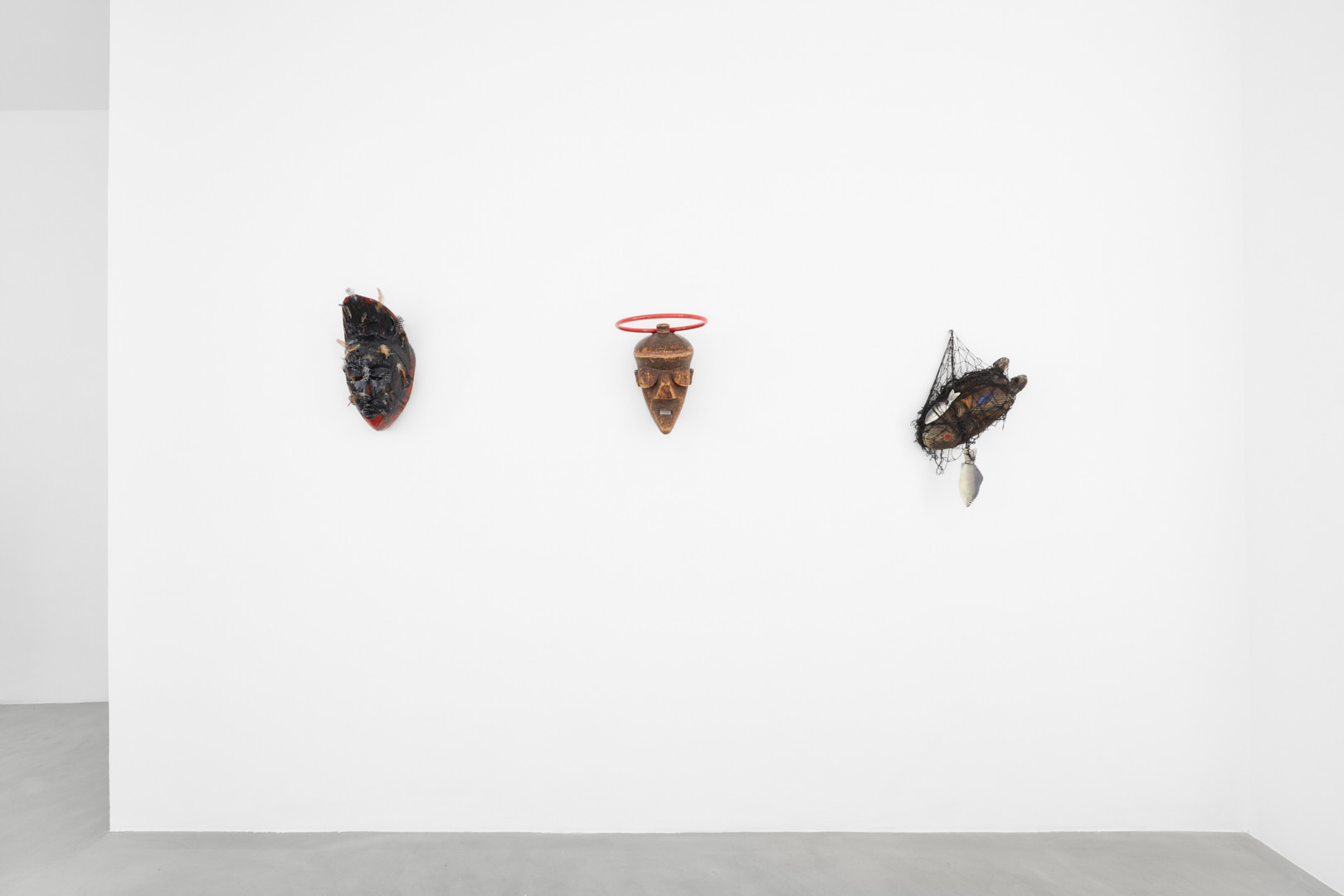
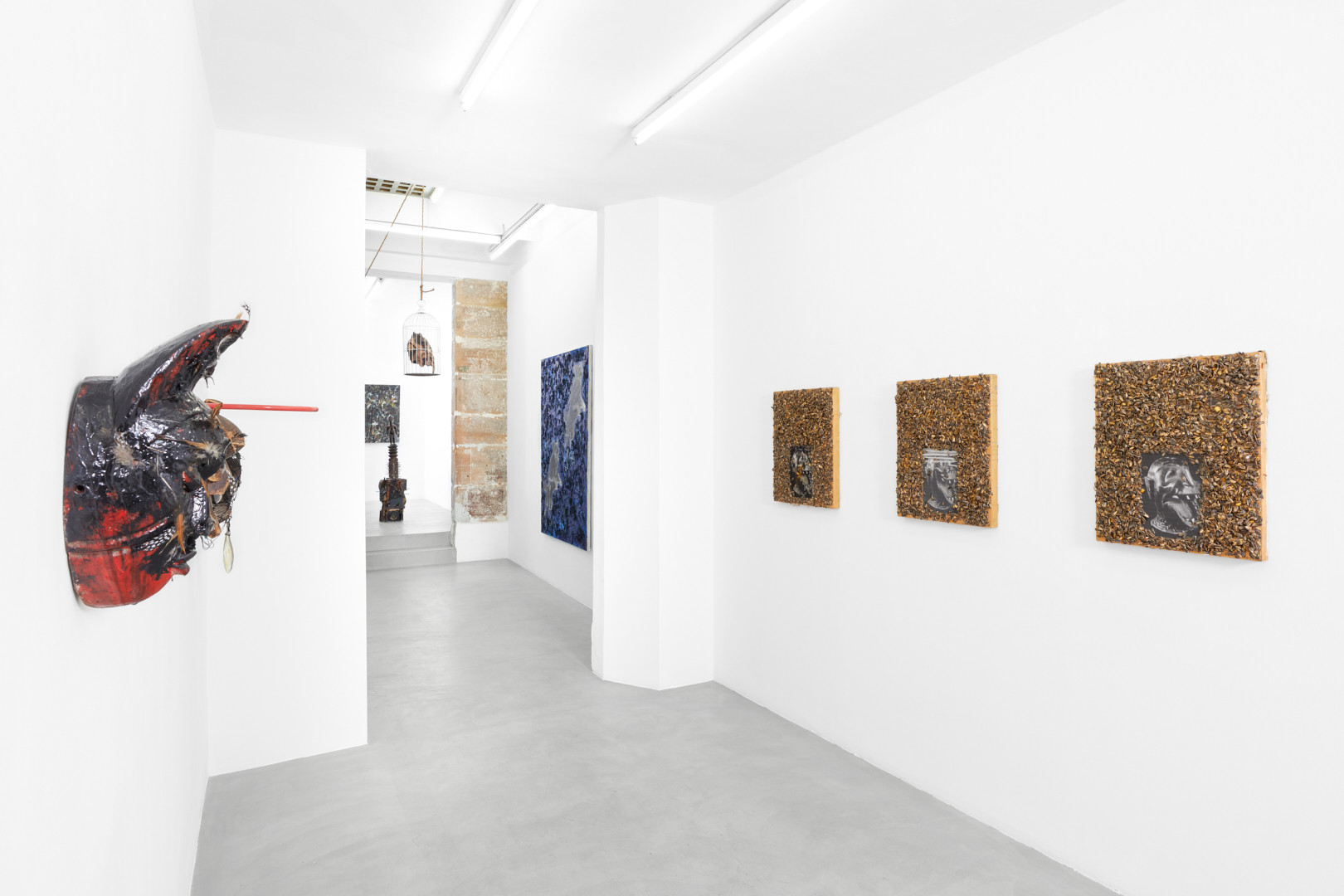
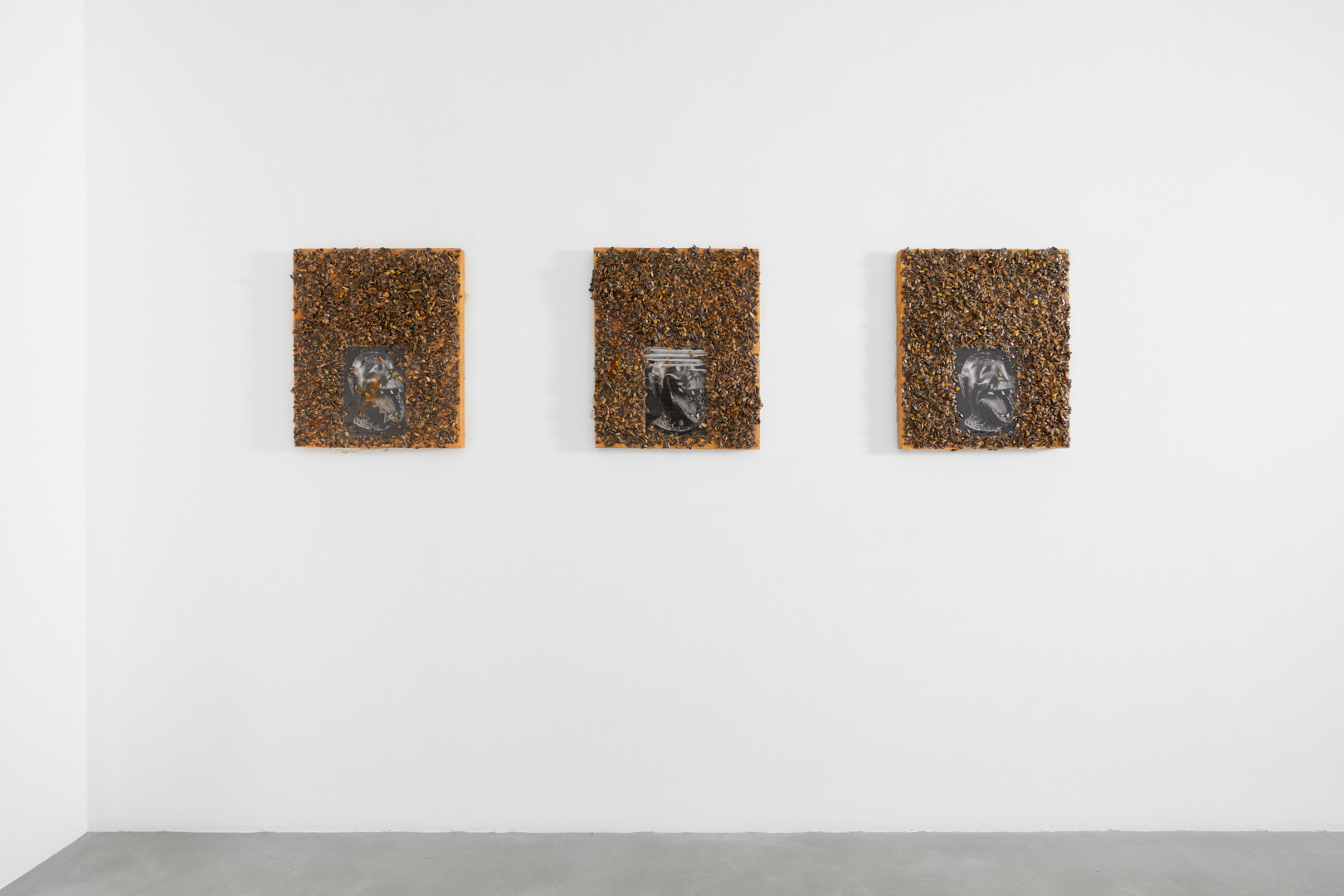
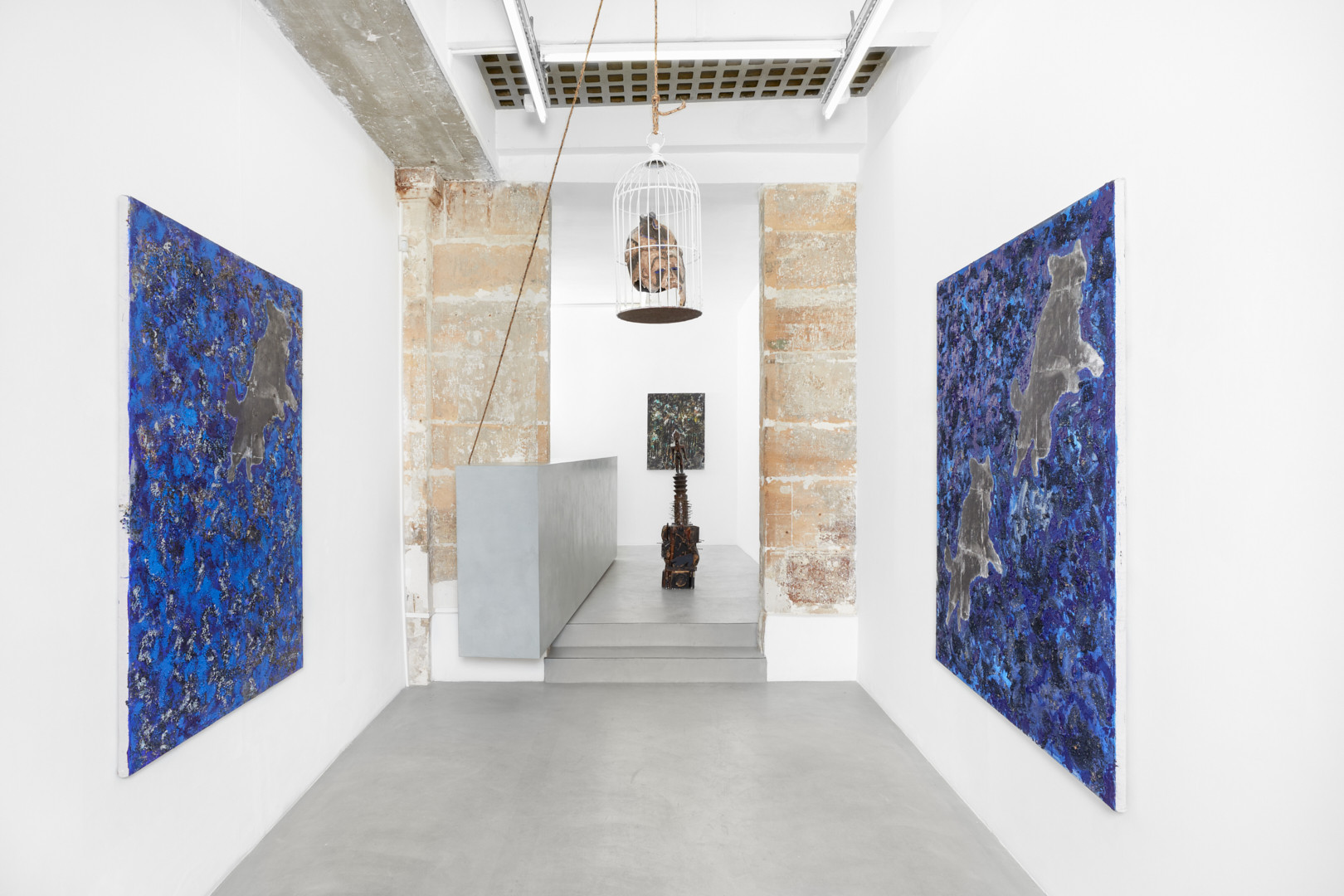

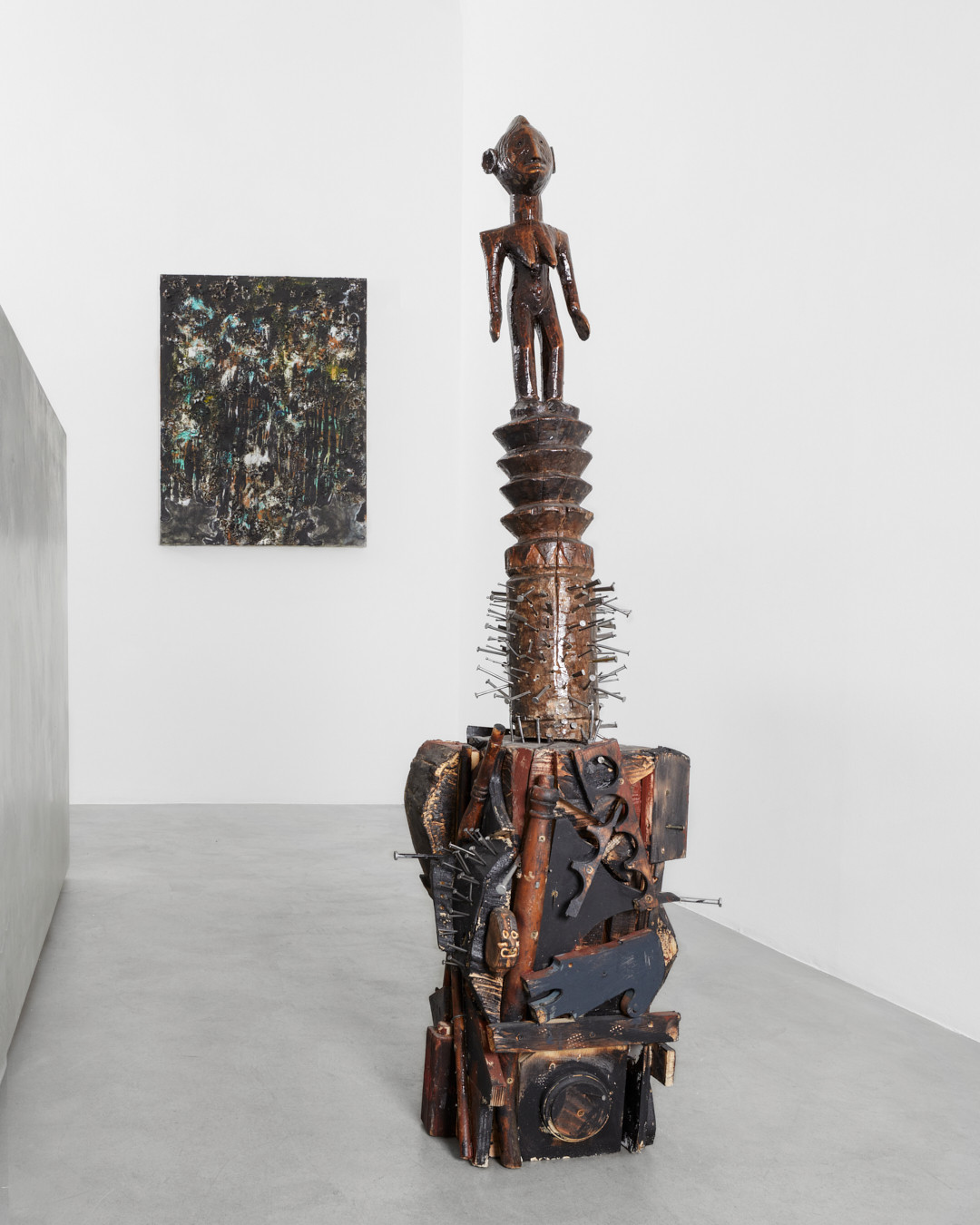

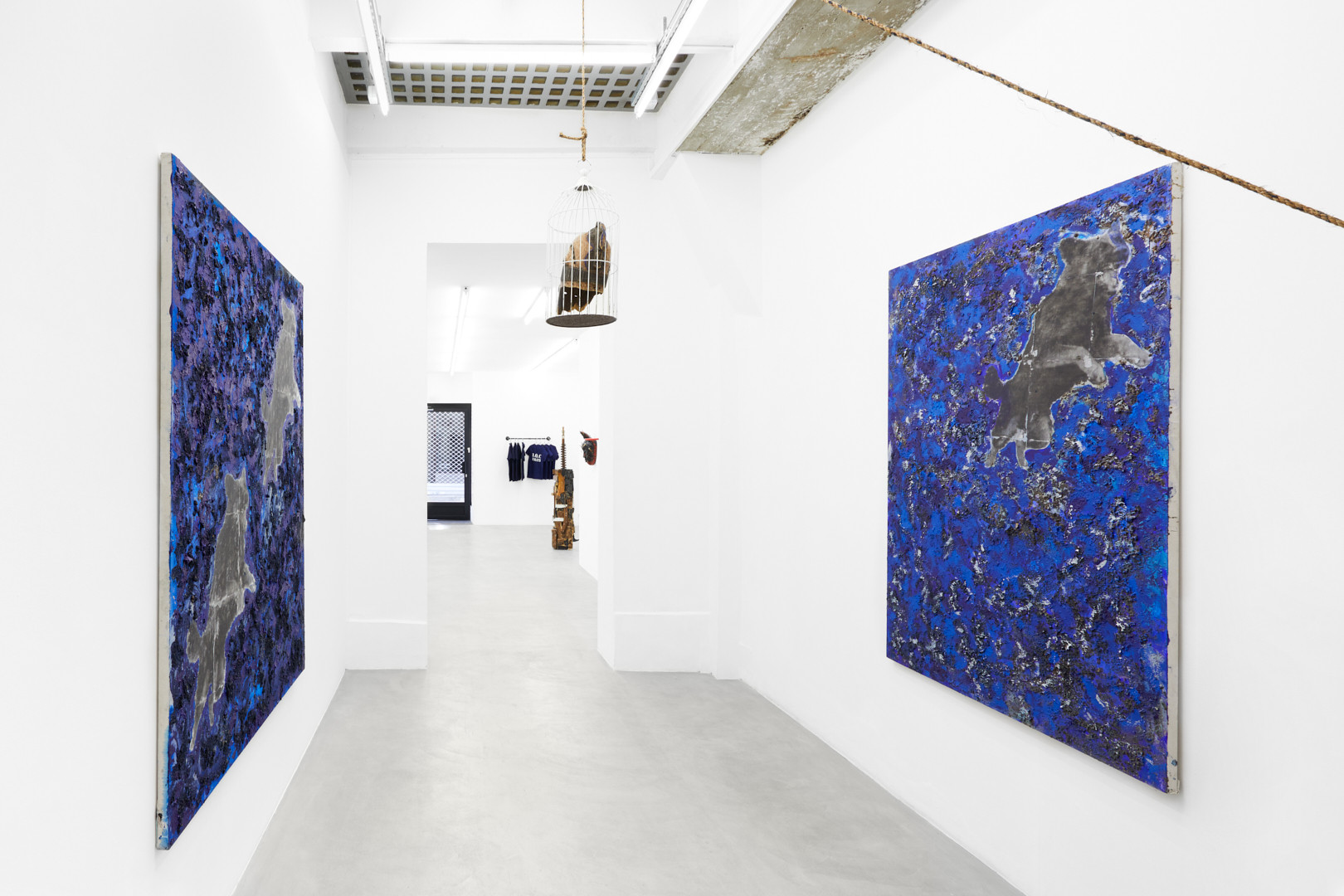
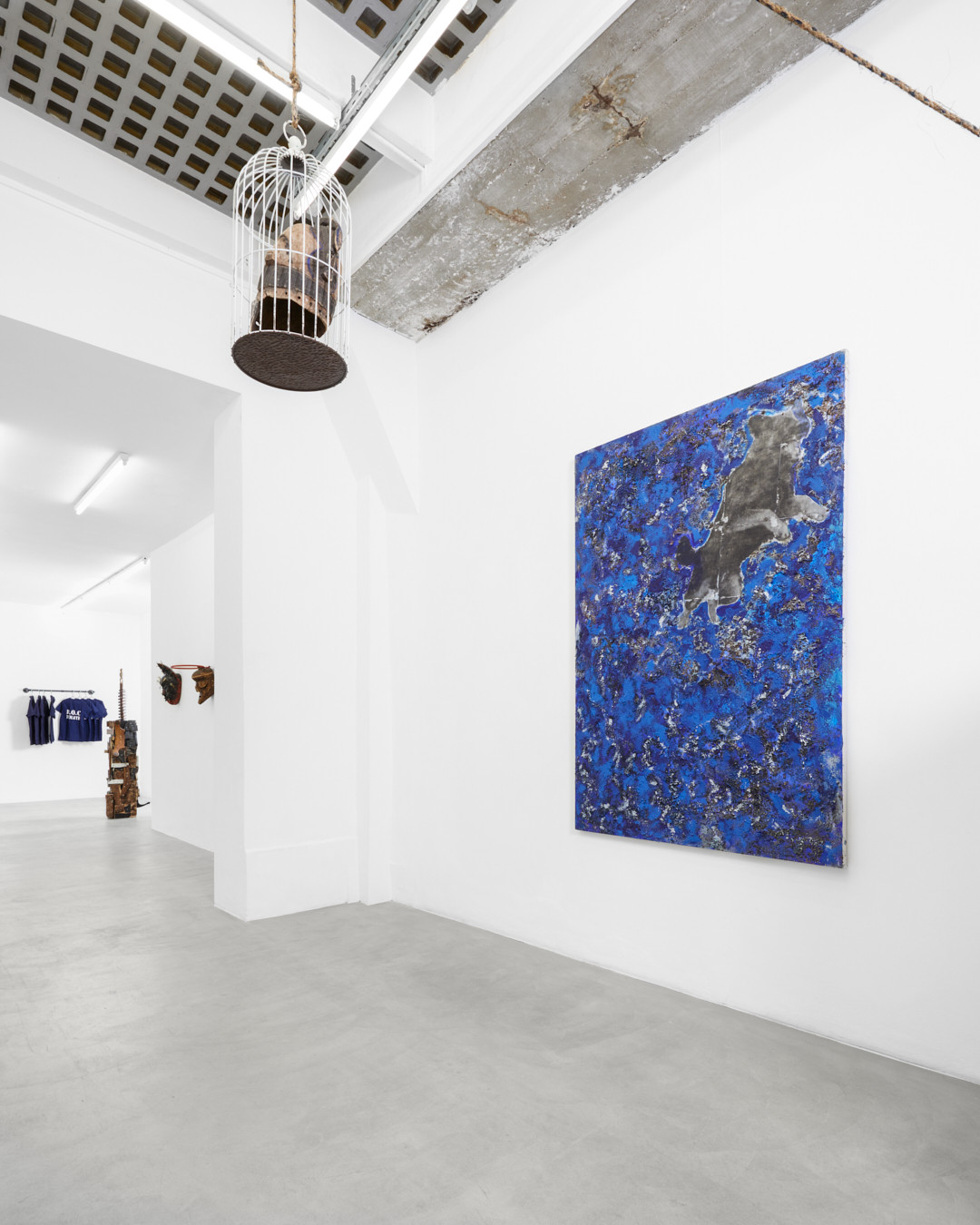

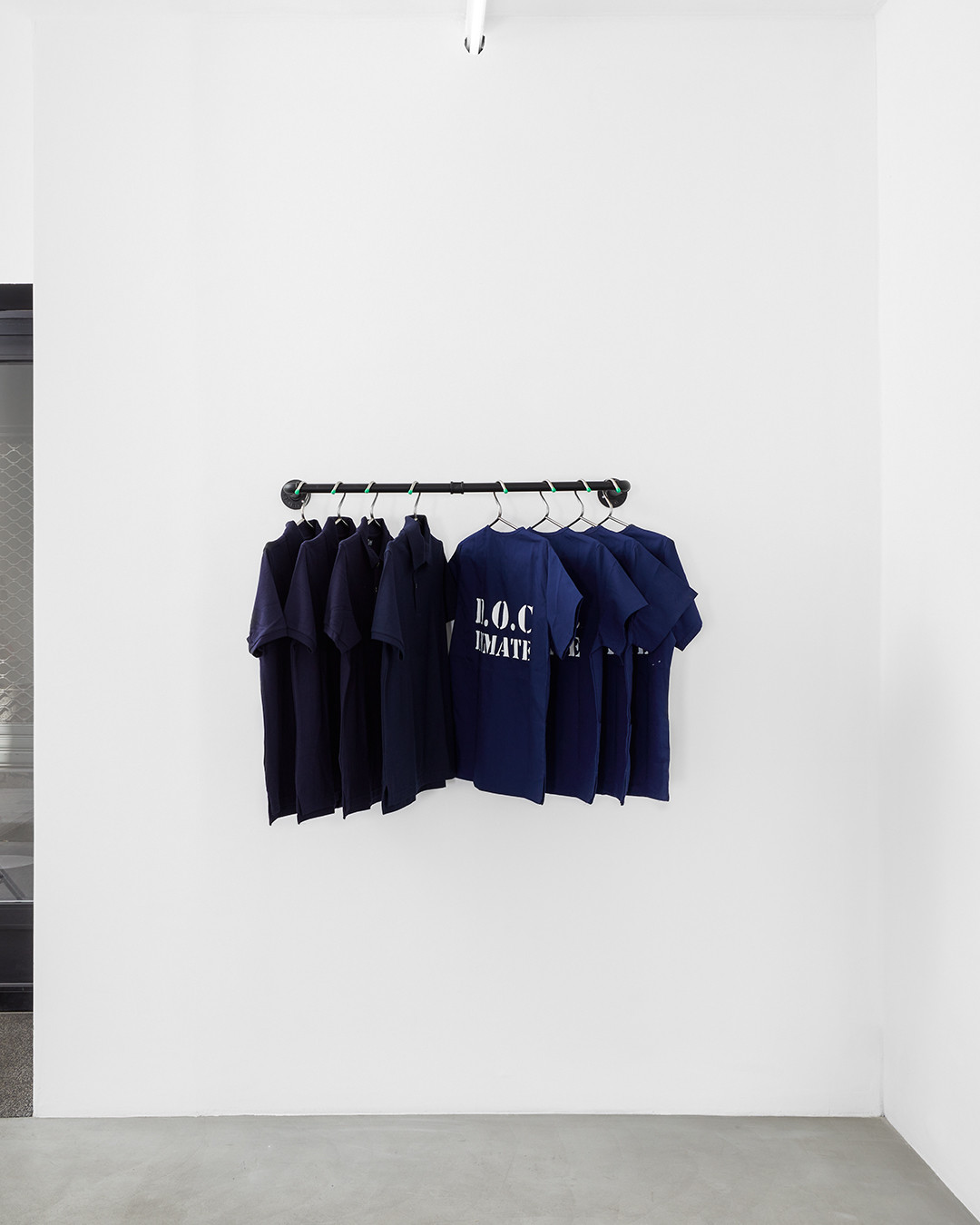
© Credits photo: Thomas Marroni
















”Conceptual art, for me : is to choose freedom.” Emmanuel Massillon, a young African American artist born in Washington D.C. in 1998, has never ceased to put in practice his precept, much like a protective mantra. To never hold back. And inversely, lower the frontiers, to authorize oneself all mediums: paint, sculpture, photography. Not hesitating to combine them in a single work’s core -sculpted elements with visions, wood or even textile.
This conceptual choice, Emmanuel Massillon explains it in multiple means. First and foremost, through a rejection of the figurative, which rules the era in the African American scene in particular. “I did not recognize myself in a lot these paintings which convey a romantic vision of the Black figure. I concede their importance, yet I wish to spread something else.”
This « something else » - far from being a dreamed figure, closer to a veridic, lived experience – is a tension to begin with, a force. Emmanuel Massillon links his past, the almost sensorial memory of his childhood, to morsels of American History – from the War of Secession to the American Inner Cities, from colonization to the tears of an America whose never stopped ostracizing minorities.
« All which transpires within my art spawns from my background.” And we think of the heed of a Lautréamont in the Songs of Maldoror for whom the ink of words inscribed upon the blank page, must have gone through blood.
Emmanuel Massillon fuses together fragments of existence: his beforehand – memories of youth, of school, of the streets, where Hip-Hop booms and police sirens wail – and that of a whole community. He identifies to the genre of Hip-Hop and particularly Hip-Hop Producers and there use of samples. In Hip-Hop music, to sample is to borrow from old compositions to forge new ones. Emmanuel Massillon samples the archetypes of America. He diverts and scuttles them. He updates their cursed aspects and makes way for his own voice, between ravishing humour and a song of hope. He finds in this manner, his very own archetypes.
He plays with the clichés of the American Dream. In a similar fashion to the Easy Transition installation, where the public school uniforms were fronted to those of prisoners’, reminding of the School to Prison Pipeline theory: the dress code, and other regulations of the American school system, favouriting the passage from school seats to those of a cell.
Even the subjects, so diverse, of Emmanuel Massillon’s artworks become political. Like when he makes use of Cheetos’ orange dust to entirely saturate the canvas, like a stunning pigment of a Renaissance painter. This snack is a staple in poor neighbourhoods where big supermarket chains refuse to settle by fear of lack of consumers. In this Food Desert, Emmanuel Massillon saw too many crowds become addicted to sodium, by excessive consumption of cheap, overly salty snacks. He denounces this new dependence in the title of a whole new series of work: Sodium Craving…
For Emmanuel Massillon also makes a resonating use of his poetic force in the titles of his works. Wordplay, street slang, the titles exhibit the artist’s numerous influences. Such as the Inner City Angel: where the biblical figure of an angel is created in the image of a basketball player escaping social determinism… “Black youths from poorer precincts still believe that only basketball can help them out of the streets…”. Or even the series Dog Food, which reminds us that for very long, the Black body was torn up by police dogs before self-destroying in the consumption of Dog Food, the nickname given to heroin.
Emmanuel Massillon hits hard. He does not hesitate to confront taboo subjects. He sculpts with his own hands antique African masks and other fetishes. He endows them with weapons or scars – a rusted nail – sometimes a cage – a knotted fisher’s net. As such he reinvents his own ascendancy. He fills the holes of an African American diaspora, born of slavery and of colonies, but who in the end forgot the original continent for an excluding and lesser American dream.
The artist himself was named Emmanuel by his parents as a tribute to his Haitian ancestors: the first slave colony to rebel against the system.
To resist : to be heard. Snatch back the forbidden word. Heighten the voice to better denounce. As states the title of the exposition –“Wait, Just Hear Me Out!”
It is the voice which seems to unite Massillon’s pieces. A voice which comes from afar, from something buried, from the entrails and from the memory. However a voice that carries.
Boris Bergmann